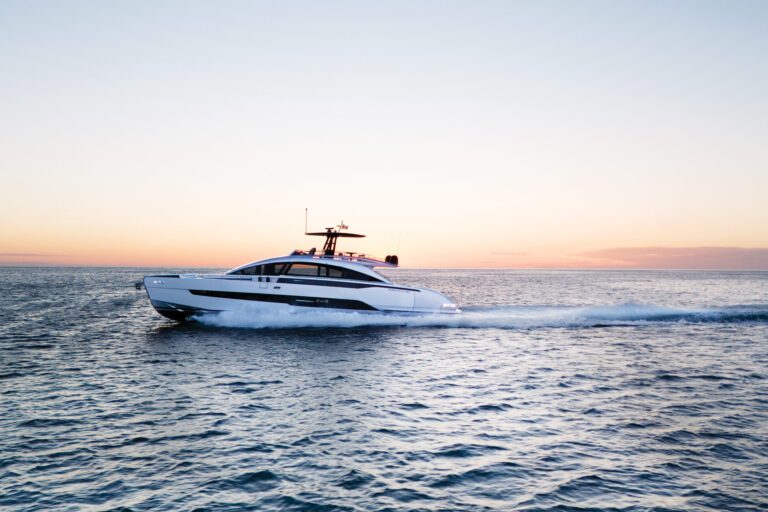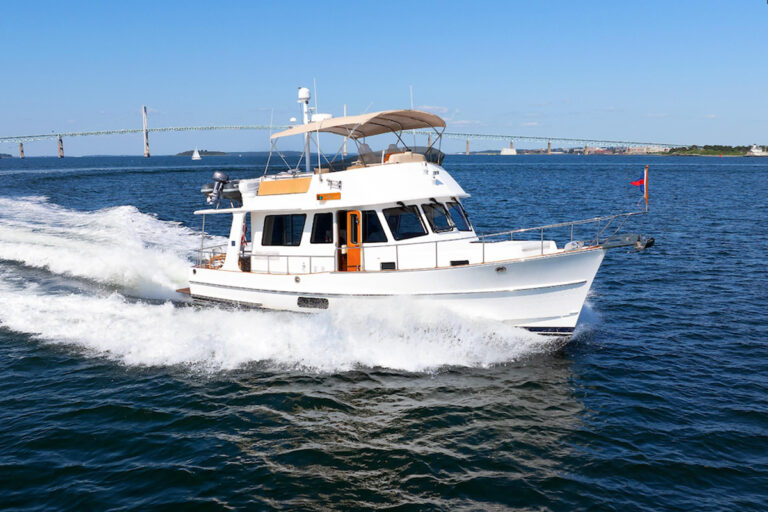
Pine Island Sound
A cruiser rides at anchor between a pair of deserted islands, sun setting to the west, the scent of grilled steaks carried aloft by a soft sea breeze.
Welcome to Pine Island Sound, and one of the finest cruising grounds in the southern U.S. This portion of coastal southwest Florida, stretching from Fort Myers to Port Charlotte, encompasses several hundred miles of sheltered waterway that are beloved by fishermen, sailors and powerboaters alike. From world-renowned sportfishing and first-class marinas, to expansive bays, pristine beaches, and lingering pockets of Old Florida heritage, the area has something for everyone.
Florida has some 1,200 miles of shoreline—double that when you count the various coastal nooks and crannies, plus hundreds of miles of sheltered passage along the Intracoastal Waterway. Within this realm, you can find wild anchorages surrounded by unspoiled wetlands, or you can dock adjacent to some of the most exclusive real estate on the planet. And every once in a while, you can enjoy both ends of this cruising spectrum on the same day.
The Sound has remained a personal favorite since childhood. Back then, we explored the coastline and fished the passes in a vintage wooden runabout with a cantankerous outboard from the Eisenhower era. Fast forward a few decades and I’m still a big fan of the region— especially when I have an opportunity to revisit some perennial favorite ports aboard a factory-fresh motoryacht.
Cruisers Yachts had a new 52-footer in need of a shakedown cruise; I wanted a break from deadlines; and my son felt deserving of a classroom respite on the occasion of his 12th birthday. Plans were made, provisions secured, and Tuesday morning found us on the seawall at Cape Coral’s Tarpon Point Marina, watching as Captain Kurt Johnson made easy work of walking a 520 Sports Coupe sideways into a tight slip. Hurray for IPS and joysticks.
A former fishing guide, towboat pilot, and delivery captain, Johnson spent more than two decades plying area waters. And just as I’ve found, familiarity never bred contempt. With dozens of marina resorts and many more anchorages within our range, paring down our options to fit the allotted schedule was tough. Ultimately, we settled on some long-time favorites.
Tarpon Point Marina sits at the mouth of the Caloosa River, and the junction of the ICW and the Okeechobee Cross- Florida Waterway. To the north, Pine Island Sound opens between the larger Pine Island to the east and a string of narrow barrier islands facing the Gulf of Mexico. The Sound is a tapestry of shallow grass beds and sandbars etched by both marked and unmarked channels. Those lacking local knowledge would be well advised to keep between the reds and greens until they are north of Pine Island, where the channel opens into the expanses of Charlotte Harbor. Offering more than 100 square miles of sheltered water with uniform depths of 10 to 15 feet, this is where the sailboats come to play.
Once past the idle zones of the Miserable Mile, we revved up the trio of 435-horsepower Volvos and had a bit of fast fun. As I’ve come to expect from IPS-powered boats, the 52 delivered runabout- like handling, and was remarkably frugal when compared to similar-sized boats from the era of shaft drives and mechanical fuel injection. Back in the day, I’d have never believed that a 21-ton, 52-footer could maintain an easy 30-knot cruising speed, while consuming just under 50 gallons an hour. Before we knew it, Gasparilla Island was in sight.
Gasparilla Island is home to the village of Boca Grande. Billed as the Tarpon Fishing Capital of the World, it’s also a favorite haunt of folks who like to vacation under the radar. It’s similar to Nantucket or Catalina: a blend of well-maintained historic cottages and new construction that adheres to a traditional aesthetic.
Our destination was the island’s crown jewel: the Gasparilla Inn & Club. A right turn at the harbor entrance brought us past the Inn’s seaside golf course to the courtesy dock for the Pink Elephant Restaurant— always a good choice for lunch or dinner. The inn is fast approaching the century mark, and shows its age in the best possible way. Anyone seeking a high-end, low-key respite ashore will find spa services, a beach club, and immaculately maintained croquet courses, where competitors in starched whites take the game quite seriously.
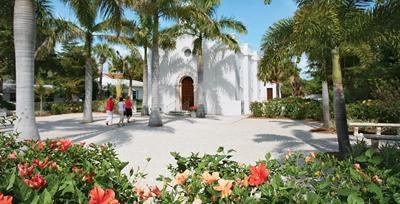
But Boca isn’t all traditional garb and afternoon tea. Rent a golf cart and follow the banyan-tree-lined streets through the diminutive downtown, and you’ll end up at a pigpen. Since 1926, the Whidden family’s namesake marina has been an epicenter of Boca Grande’s sportfishing community, dispensing bait, beer, fuel, and local gossip from a waterfront compound that has aged into a sort of shabby-chic patina. The angles of the storefront are akimbo, weathered nautical flotsam decorate the premises, and the resident swine—along with the goat that lives out by the wooden water tank and assorted waterfowl that roam the grounds— create the atmosphere of a movie set.
Sitting midway between Whidden’s and the Gasparilla Inn, both ideologically and geographically, is the Boca Grande Marina. In addition to offering the most accommodating, modern transient dockage on the island, it’s also the closest marina to downtown action. Like most points on the island, it’s just a short stroll away from the Gulf beaches.
In contrast to Boca Grande’s genteel diversions, the island just to the south offers a truly wild Florida experience. Cayo Costa is reputed to have been the haunt of the pirate José Gaspar. Later, it became Florida’s version of Ellis Island, when thousands of immigrants arriving from Caribbean ports in the 19th century were held there in quarantine. A small fishing community thrived through the 1920s, but isolation from the mainland led to abandonment, and in 1976, the entire island became a state park.
Today, park service ferries deposit small groups of day trippers on Cayo Costa’s uninhabited shores, while private vessels drawing five feet or less can ease over the entrance bar and drop the hook in the protected waters of adjacent Pelican Bay. That was stop number two on our agenda, where we enjoyed steaks on the grill at sunset and a full moon rising across the sound. The morning after, we took the tender ashore to make the half-mile crossisland stroll to a truly deserted beach.
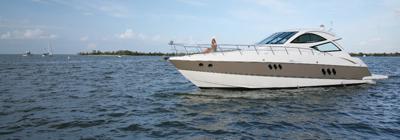
We whiled away our morning with a prolonged frolic on a powder-sand strand, with nary a condo in sight. By lunch hour, we were tying up at the most exclusive address in the area, Useppa Island. Access to the island requires a boat and an invitation. The entire island is operated as a private club, and membership grants access to marina docks, restaurant, clubhouse, beaches, and other public areas of the island.
From Useppa, we idled a short distance westward, across the ICW to the decidedly more democratic island resort of Cabbage Key. The hill that commands the center of Cabbage Key is actually a shell mound created over many generations by the region’s indigenous Calusa people. In the 1930s, the family of novelist Mary Roberts Rinehart settled on this high ground, constructing a home that was subsequently transformed into the Cabbage Key Inn and Restaurant.
The Wells family acquired the vintage inn in the mid-1970s, and has since done a marvelous job of restoring and maintaining this charming slice of Old Florida. Returning after a prolonged absence, I found Cabbage Key as I remembered. Visitors can climb the water tower to catch a sunset over the Gulf; still enjoy a fire burning in the lounge hearth on cool evenings; and wonder at walls of the dining room still covered in an inch-thick coating of autographed dollar bills. On busy weekends, a small armada of daytrippers still come ashore to consume the inn’s signature cheeseburgers.
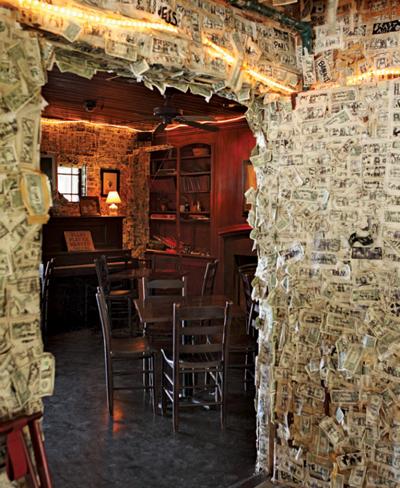
Come evening, the atmosphere at the Inn downshifts. Burgers may be the dining room’s bestseller, but the dinner menu gives evidence of a far greater talent in the kitchen. After a quiet, savory meal and the ritual signing and attachment of fresh dollar bills to the wall, our crew adjourned to the den-size bar, where Rob Wells, Sr., was dispensing advice on snook fishing and recollections of years past.
Cabbage Key marked the midpoint of our cruise, but just the beginning of possibilities. Pine Island Sound offers a rich mix of destinations—far more than we could experience in the time remaining. Pelican Bay is the bestknown anchorage, but there are dozens of other secluded gunkholes scattered through the expanses of the Sound. Those more interested in the lush life can stop into the South Seas Island Resort for some golf and spa time. Recently, South Seas has undergone a $140 million upgrade that includes some spectacular new public areas and a complete rebuilding of the marina docks.
Another area favorite is the ’Tween Waters Inn, where marina guests are just a short stroll away from Gulf beaches, and an easy taxi ride away from Sanibel and Captiva’s dining and entertainment scene. At the ’Tween Waters, the concierge can set you up to play 18 holes in the morning and get a spa treatment in the afternoon, and then you can head over to the Crows Nest to watch the crab races.
Farther south, the immaculate Sanibel Harbor Resort and Spa sits at the mouth of the Caloosa River, and Estero Island’s working fish docks now share the waterfront with a trio of eateries. Just across the way, the Pink Shell resort provides boaters and resort guests with an upscale option that’s a cut above the strand’s traditional offerings.
Ultimately, the choices outweighed the calendar. Regardless of where our ramblings took us, this cruise mirrored so many of my previous excursions on the Sound. We headed for home having revisited long-time favorites, discovered a couple of new venues, and postponed others till next time. And that’s why, when the destination is Pine Island Sound, there will always be a next time.

